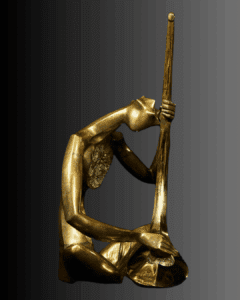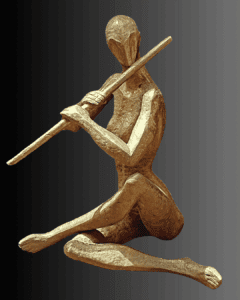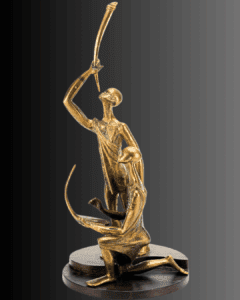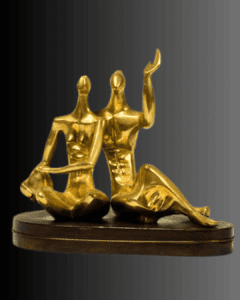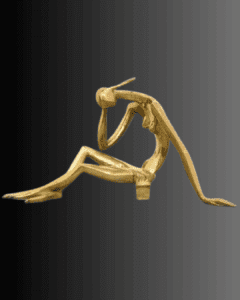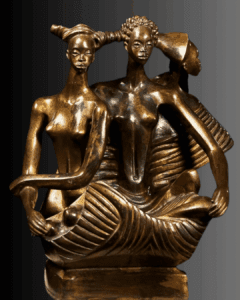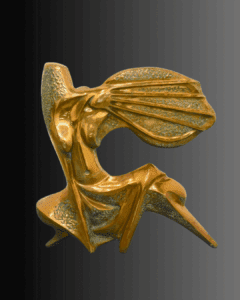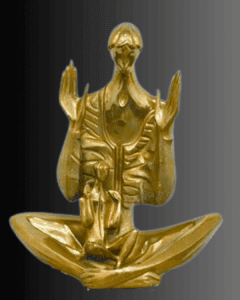Walk through Kinshasa today, and you’ll encounter Alfred Liyolo’s legacy in two forms: bronze sculptures gracing public squares and his smiling face on Tembo beer advertisements throughout the city. That a beloved Congolese beer brand chose an artist to represent their product speaks volumes about how Liyolo captured the nation’s heart.
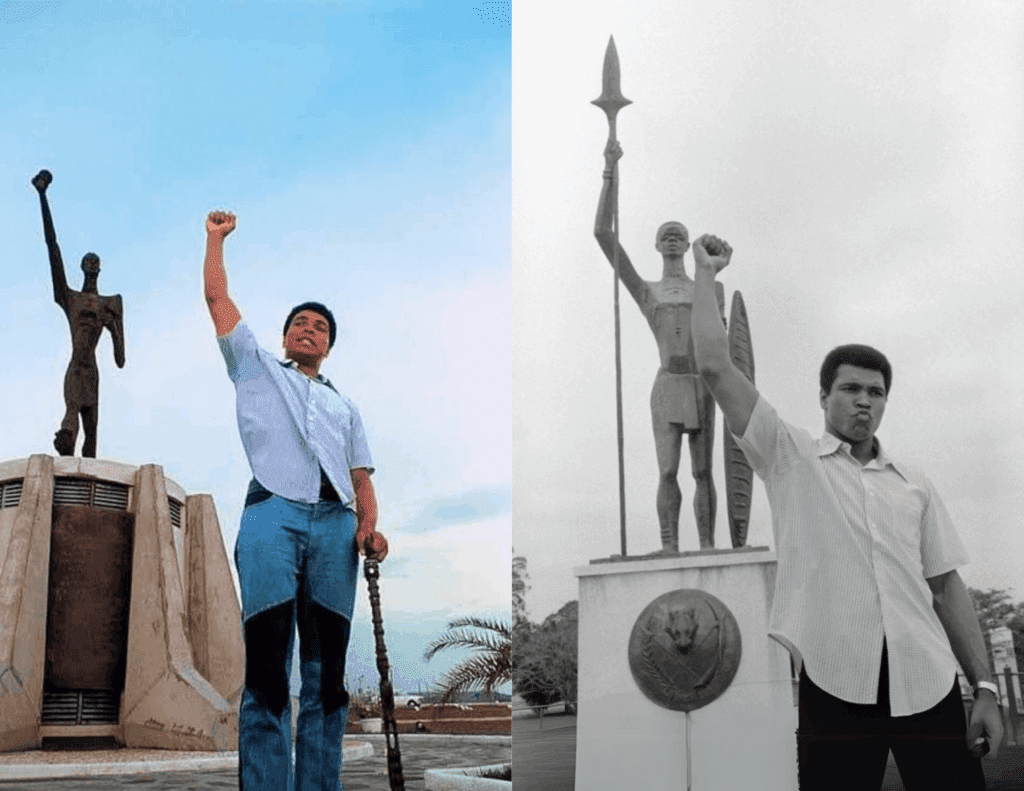
The journey from Bolobo, a humble riverside town on the Congo River where Liyolo was born in 1943, to Kōkyo (Tokyo’s Imperial Palace) where he became the first and only African artist ever received by Emperor Akihito, is extraordinary. This is the story of how a grandson of an ivory carver transformed bronze into bridges between worlds, proved that art could speak to emperors and common people alike, and became a symbol of Congolese pride served with every bottle of beer in the nation’s capital.
From Bolobo to Vienna: Forging an Artist
Artistic talent flowed through Liyolo’s family like the mighty Congo River. His grandfather’s skill as an ivory carver sparked young Alfred’s fascination with sculpture. After graduating from Kinshasa’s Institute of Fine Arts, destiny called in 1963 with a scholarship to Vienna’s Academy of Fine Arts.
In Vienna, Liyolo embraced this opportunity with remarkable determination. Under Professor Wander Bertoni’s guidance, he didn’t merely study; he excelled, graduating top of his class with the prestigious title Magister Artium. Most crucially, he mastered bronze casting techniques virtually unknown in Congo, skills that would revolutionize sculpture throughout his homeland.
Return to a Nation Awakening
When Liyolo returned around 1970, Congo was experiencing cultural renaissance under President Mobutu’s “Authenticité” movement. This campaign sought to rid the country of colonial vestiges and create a singular national identity. Liyolo’s bronzes, with their modernist lines and distinctly Congolese themes, became visual anchors for this transformation.
One of his most powerful works from this period was “Le Bouclier de la Révolution,” a towering bronze monument completed in 1973.
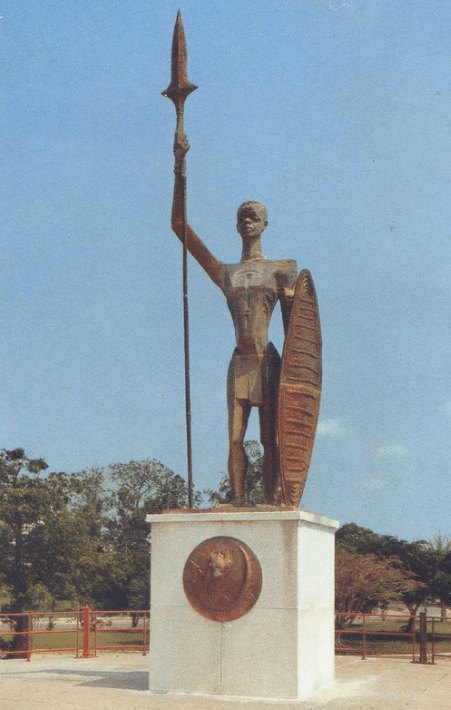
Commissioned to replace Stanley’s colonial monument, which had overlooked Stanley Pool since imperial times, Liyolo’s sculpture embodied the new Zaire’s vision of independence and strength.
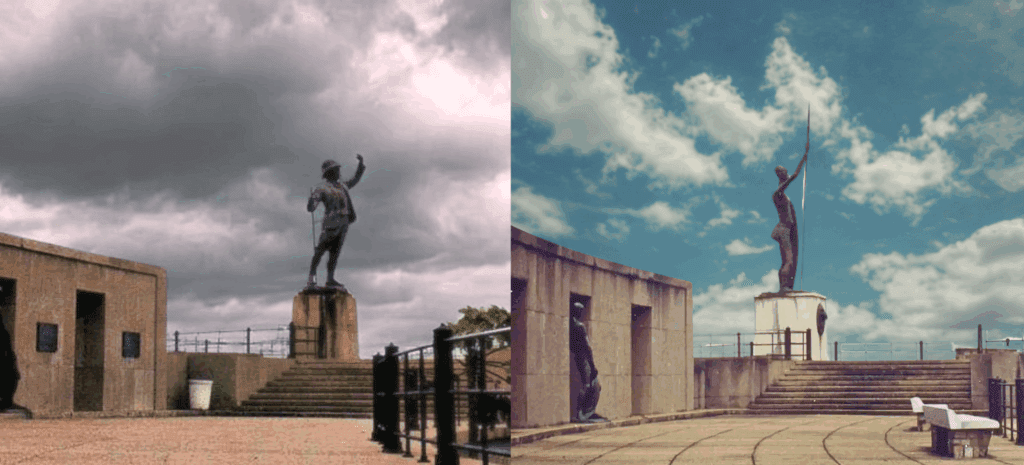
The symbolism was unmistakable: African artistry now commanded the same spaces once dominated by colonial figures.
Master and Ambassador
Liyolo’s relationship with bronze transcended mere craftsmanship. He breathed life into metal, creating sculptures that captured African essence while speaking a universal language of beauty. “Art is not a luxury,” he declared. “It is how we speak to the world.”
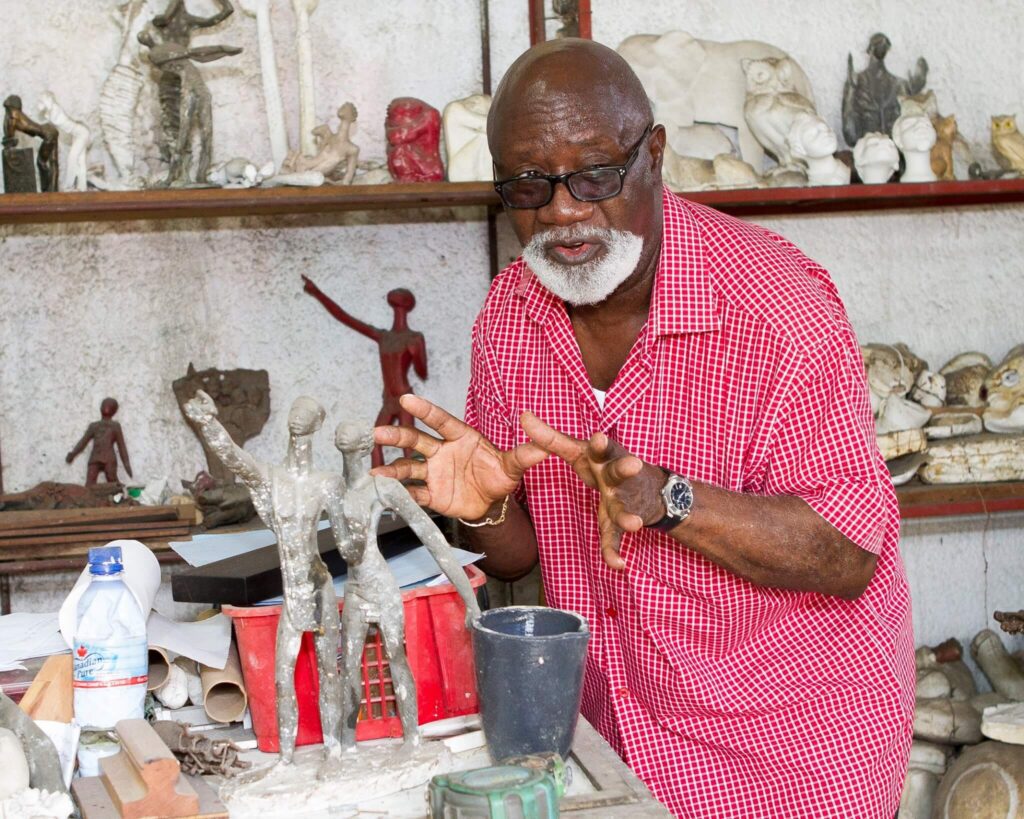
His influence reshaped artistic education throughout Congo. As professor and later Director General of Kinshasa’s Academy of Fine Arts, he introduced contemporary bronze casting techniques and became the first Director to admit female students. His workshops became crucibles of creativity where a new generation discovered their potential.
International recognition followed naturally. Liyolo’s sculptures found prestigious homes: the Louvre in Paris, the Vatican where Pope John Paul II personally received his work, the Beijing Olympic Park. He exhibited across continents, from Monte-Carlo to New York, representing Congo at World Expos in Seville and Lisbon.
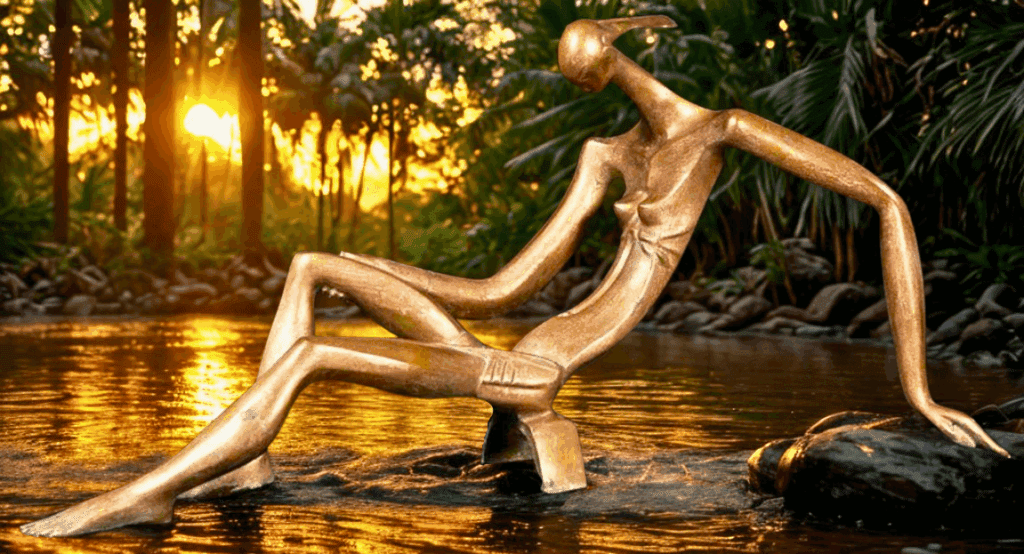
The pinnacle came in 1989 at Kōkyo. Emperor Akihito praised his art’s “universal language of beauty,” words that captured exactly what made Liyolo exceptional. His bronze sculptures spoke to emperors and street vendors alike, transcending every cultural boundary.
Navigating Power, Transcending Politics
Liyolo’s relationship with President Mobutu proved complex yet productive. The president’s patronage enabled monumental works that became symbols of Zairian identity. This recognition extended beyond public sculptures; Mobutu’s government honored Liyolo by featuring his art on national postal stamps, a testament to his cultural importance when the national post service still functioned effectively. Legend suggests Mobutu once purchased an entire solo exhibition, such was his admiration for the artist’s vision.
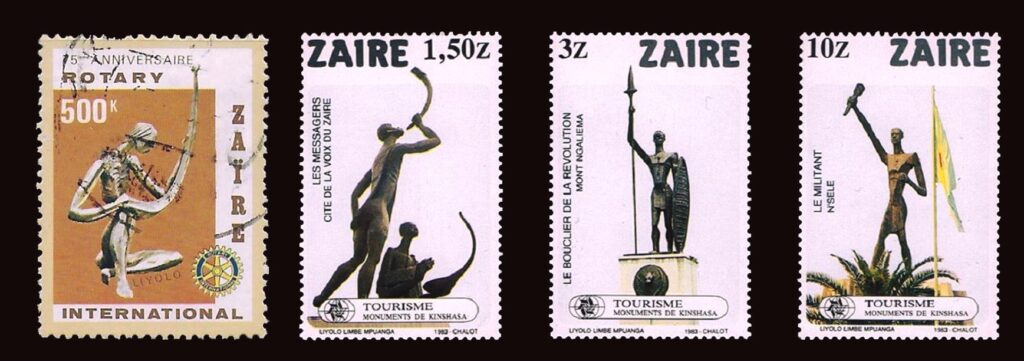
Yet Liyolo’s genius lay in creating art that outlasted politics. When Laurent Kabila succeeded Mobutu, he too honored the sculptor’s contributions. This continuity revealed a deeper truth: Liyolo’s work belonged not to any regime, but to Congo itself.
Exile, Return, and Legacy
The 1990s brought devastation as Mobutu’s regime collapsed. Looters ransacked Liyolo’s studios, destroying decades of precious work. Forced into Vienna exile, he continued teaching and creating despite profound loss.
But love for his homeland proved stronger than bitterness. Liyolo returned to Congo with characteristic determination. “My art belongs to Congo,” he insisted, resuming his lifelong mission to elevate Congolese culture on the world stage.
In 2012, Alfred and his wife Friederike established the Fondation Liyolo, ensuring his techniques and vision would inspire future generations. Today, over fifteen of his public works still grace Kinshasa, including the beloved Franco Luambo Makiadi statue in Place de la Victoire.
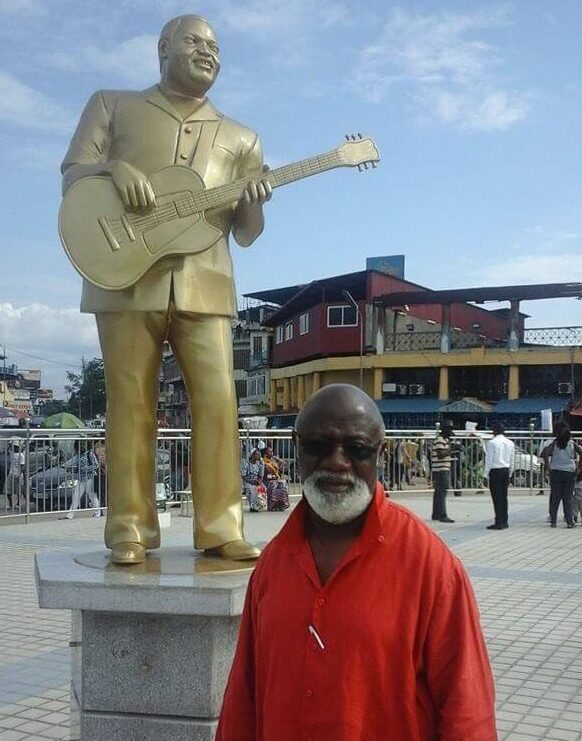
Conclusion
When Alfred Liyolo died on April 1st, 2019 in Vienna, the art world lost a master who had fundamentally changed how African sculpture was perceived globally. From his early training in Vienna to his triumphant meeting with Emperor Akihito, Liyolo proved that artistic genius knows no boundaries.

His bronze sculptures bridged two worlds, combining European technical mastery with profound African cultural expression. Through monumental works that replaced colonial symbols, revolutionary bronze casting techniques that transformed Congolese art education, and international exhibitions that opened doors for generations of African artists, Liyolo created a lasting legacy.
Today, his influence endures in every bronze sculpture gracing Kinshasa’s squares, in the artists trained through his methods, and in the Fondation Liyolo that continues his mission. Alfred Liyolo didn’t just create art; he sculpted a pathway for African creativity to claim its rightful place on the world stage, reminding us that true artistry transcends all boundaries and speaks to the universal human spirit.
Gallery: The Bronze Legacy of Alfred Liyolo

